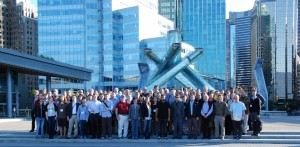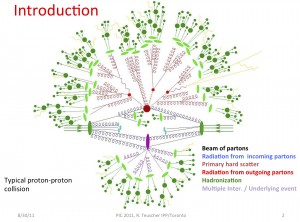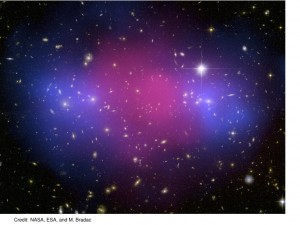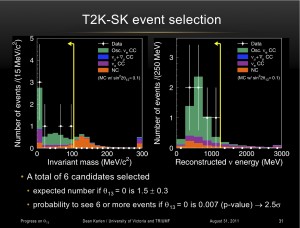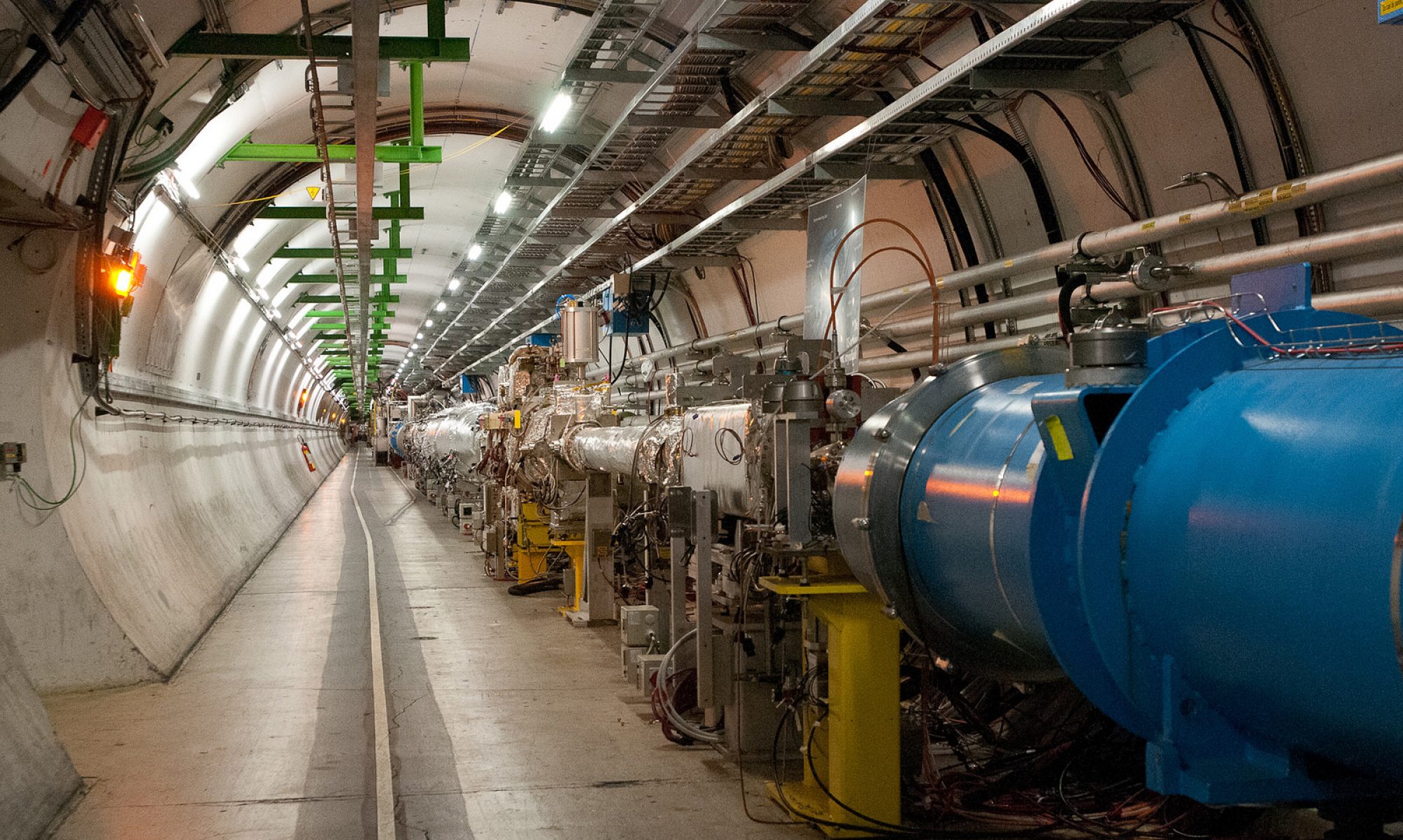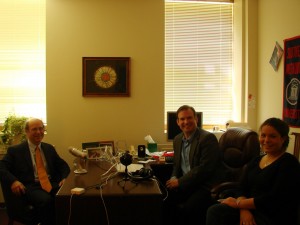Note: this is an essay version of the talk I gave at the 2011 Mustang Corral, SMU’s retreat for first-year and transfer students which occurs a few days before Convocation.
In high school, you begin to develop an important skill: reading between the lines. You are asked to read difficult works of literature and describe the implied meaning of the text, rather than the literal story told in the work. Let’s consider an example: Fyodor Dostoevsky’s “Crime and Punishment”. Read completely literally, it is a story about a man who plans and commits a crime, tries to avoid being caught, goes a little mad, falls in love, and eventually goes to prison in Siberia for his deeds. But is this the meaning Dostoevsky intended us to take from his book? Why write a story whose sole interpretation would be so common and bland?
Rather, the authors of such works intend a deeper meaning in their writing and they hope that we will have the patience and the wisdom to glean that meaning, and even to develop personal meaning. “Crime and Punishment” is not just a story of a man who kills, evades the police, and then goes to jail. I read it as the story of a man tormented by guilt, a man whose soul is growing darker and more lost to the world, who redeems himself through suffering and who finds happiness by paying for his crime.
Let’s step away from Russian literature and instead ponder the vast expanse of the cosmos, a great story of time and space whose pages we can read on a clear night when the stars shine and the planets dance. Let me now ask you a question. When you look at the following picture of that cosmos, what do you see? Based on what you see, what do you conclude the universe is primarily made from?
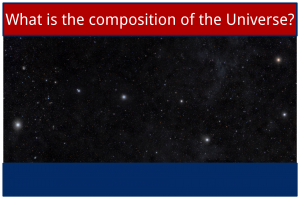
This skill – reading between the lines to find the truth – is one which will serve you not only in reading (and creating) literature, but in studying (and creating) art, in performing, in reading the struggle inherent in athletic competition, and especially in science. Science requires you to, for instance, begin only with a set of literal facts about the universe and from those craft a hypothesis about how those facts are related, or explained by an underlying principle. If all you care about is facts, you can gladly spend the rest of your life writing down literal observations of the world: the sky is blue, ice cubes float on water, licking the terminals of a 9-volt battery makes my tongue feel funny, 1+1=2, and so forth.
It is science, and the language of mathematics that we use to describe and relate observations of the natural world, that allows us to develop meaning from a series of seemingly dispassionate and disconnected observations. What if I told you that the reason your tongue tingles and the reason the sky is blue are related to the same fundamental principles of Nature? What if I told you that in order to explain why ice cubes float on water, you need to dig deep down into the realm of the atom and quantum physics (even then the structure of ice and water and what happens when water freezes is an active area of research even today).
I study physics. What is physics? At its heart, it is the study of energy, matter, space, and time. Physics gives us the framework to understand facts like those I mentioned above, and mathematics is the language that we use to describe Nature in this framework. Physics is powerful: it describes, but it also predicts.
There are 16 undergraduates at SMU who currently are pursuing a degree in physics, either a Bachelor of Arts or a Bachelor of Science. In addition, there are a few who are minoring in physics, gaining skills in the basic principles and application of physics that will serve them in critical thinking, problem solving, developing new ideas and innovating, and applying what they learn in the broader context of their primary areas of interest. We have computer scientists and language majors who minor in physics. As an undergraduate, you are not limited to engaging with the 14 physics faculty members at SMU; you can work with us on real research, tackling problems at the frontier of the field.
Let me tell you a little about what I do, and explain both how you can become involved and why you would want to be involved. I am what is known as an “Experimental Particle Physicist” – I conduct experiments in order to understand the landscape of the subatomic world. Although I am fundamentally interested in what lies at the heart of all matter in the universe – the tiniest and most fundamental building blocks of Nature – this study is also teaching us about the universe as it existed just a millionth of a billionth of a second after it came into existence.
Hundreds of years of study of the universe using experimental and mathematical physics have revealed that it was once much more compact than it is now, and as a result it was a whole lot hotter than it was now. Our universe at present is quite cold – overall, the universe just 3 degrees above absolute zero, the coldest temperature possible. At absolute zero, even the random jittering of atoms would have to cease. At very high temperatures, the universe is much simpler than it is at low temperatures (consider the contrast between steam, very hot water, which appears as a simple and unremarkable white cloud, and ice, very cold water, which crystallizes into complex and beautiful patterns). All signs in the current universe point back to a young, very dense, very high-temperature universe. How, in our current and cold cosmos, can we understand that very early universe?
Well, one way is to look outward into the cosmos. The light coming from very distant bright objects, like stars and galaxies of stars, has traveled a very long time to reach us. Light does not travel instantly, though here on earth it is tempting to believe that it does since things involving light seem so instantaneous. If you have ever been to a baseball game and sat in the nosebleed seats, or watched a game in progress from across an athletic field, you may have noticed that there is a time lag between when you see the batter hit the ball and when you hear the sound of the hit. This is because sound travels slower than light. But light also travels at a limited, albeit fast, speed. However, the universe is so vast it takes a long time for light from distant objects to travel to Earth so we can see it.
Consider the picture I showed you above. The brightest objects in the picture form a constellation known as “Ursa Major,” or “The Big Dipper.” Those bright objects are far away from Earth; it takes light 70-80 years to make the journey from those stars to our eyes. That means that you won’t see the Big Dipper as it actually appeared on the day you were born until around your 75th birthday. That is a very humbling fact. The telescope is a time machine, of sorts, allowing you to look into the past by spying light from distant objects. The fainter the object, the further it is from Earth. The further it is from Earth, the farther its light must travel to reach us, and the further back in time we are looking at it right now.
The oldest light we can see with telescopes comes from stars and galaxies that existed about 600 MILLION years after the universe came into being. There is radio frequency light (we can’t see it, but we can easily measure it) that is even older, left over from about 300,000 years after the beginning of the cosmos. But prior to that, light was trapped in the hot gas of matter that made up the universe and will never, therefore, reach Earth.
So how do we study the early universe? Well, why not recreate it in the laboratory? Why not recreate the high-temperature, and therefore high-energy, conditions of the primordial universe? This is, in fact, what we do. We use high-energy particle colliders to smash subatomic particles together at energies that represent a time just a millionth of a billionth of a second after the universe came into being. One of these is the Large Hadron Collider, located in Geneva, Switzerland. SMU has a very active program there, working on an experiment called “ATLAS.” ATLAS is a huge piece of equipment located 150 meters below the earth. It is 8 stories tall and half a football field in length; it is essentially a giant digital camera and captures images of the high-energy collisions produced by the LHC. Each image is a snapshot of a subatomic process that was possible near the beginning of time, and we study these processes in order to understand the laws that governed the universe then. Understanding those laws will help us understand how the universe began, why it turned out the way it did, and even how it might end.
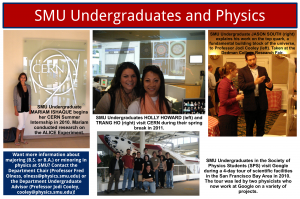
As an SMU undergraduate, you have a chance to become a researcher on this or other projects in the physics department. You can work with a Professor to develop the skills in reasoning, math, and programming needed to become a great scientist. Because we do research at the frontier of human knowledge, we are highly active and have a lot to offer you. We have had a student go to CERN, the home laboratory of the LHC, and conduct research there during the summer. We’ve had many students work during the semester, for money or for class credit, on independent research projects. But even if you don’t want to do research, you can be part of the physics community. Recently, two students who were part of my pre-med physics class went to Europe for spring break and stopped by the ATLAS Experiment for a tour. The physics department also hosts a chapter of the Society of Physics Students, which meets a few times a year and receives some financial support for activities, including trips to scientific facilities.
We are proud of our physics majors and minors. If you excel in physics, your work can be recognized with prizes from the physics department, such as the Robert Stewart Hyer Scholarship in Physics, which brings with it both recognition at the annual Honors Convocation and a small monetary award. Our majors and minors have diverse interests, from studying physics as a career, to teaching science, to applying physics in medicine to help treat cancers using beams of subatomic particles.
Let’s return to the original idea I brought up in this essay, and consider the above picture of space. Many of you probably answered that the universe is filled with stars, and so it would seem reasonable to infer that the universe must be primarily made from “star stuff” – hydrogen, primarily, but also helium and heavier atoms up to iron, which is the heaviest atom that can be produced by stars (when they die and explode). You would be wrong. Because in science, as in literature, art, and all other pursuits, it is CRITICAL to consider what lies between the literal. The stars are literal – they are the things our eyes directly perceive. But our eyes; in fact, all of our direct biological senses, are limited to a narrow range (whether it be light or sound). We use technology to enhance our senses, and recently we have discovered that most of the universe is not what you see in this picture; rather, most of the universe is what lies between the stars: the dark and unseen, seemingly empty, regions of space.
Most of the energy and matter in the universe is what we call “dark” – in a form that is unknown and unseen using light. An as-yet unexplained energy field, which we now refer to as “dark energy,” is causing our expanding universe to expand at an ever faster rate. Some have suggested that this might one day even tear atoms apart. In addition, most of the actual solid matter in the universe is in an unseen form called “dark matter.” We know that dark matter exerts a huge and important gravitational influence on the cosmos, shaping galaxies into their stable forms. Other than that, we know very little about dark matter (i.e. what’s it made from?!), and researchers here at SMU are actively engaged in that research.
So you see, you need to develop that skill of “reading between the lines” to one more general: seeing what lies between. Whatever your passion, this skill is critical. The only way to develop it is to do, to be active. If you’re a reader, become a writer. If you’re an art lover, become an artist. If you enjoy listening to music or watching a theater performance, instead create music and engage in performance. If you love science and math, don’t just take classes and cram your head with facts: talk to peers doing research, socialize with faculty, engage in research. In order to understand, you must become an instrument of understanding.
Let me close with some advice as to how you can best do this in the college environment:
- Take responsibility: You will be given a tremendous gift in college: the assumption that you are responsible for your own life. You will set your hours, your priorities, and most of your schedule. The following things happen a lot in high school but will happen only very rarely in college: a teacher is upset that you missed class, a homework assignment, a quiz, or even a test; nobody is going to tell you how to set your schedule or your priorities. Think long and hard about those things, and do them for yourself. Help is available from SMU if you get stuck along the way.
- Socialize with your peers: the friends you make here will last a lifetime and will be the greatest and most intense friendships you are likely to form for a long time. Your friends aren’t just fun (though fun is very important to surviving): they can teach you things. You will be there to lean on each other in tough times, and you will be there to make each other laugh in good times. They are fundamental to your survival and success here at SMU.
- Socialize with your Professors: pop culture makes Professors look like unapproachable social outcasts hell-bent on destroying you. We’re only paid a small part of our salary to do that; the rest is intended in the pursuit of mentoring you. We expect a lot from you, but you should expect a lot from you. We won’t hold your hand in your classes – we expect you to think and struggle and react and interact – but we are there to challenge you, to mentor you, to guide you, and to try to teach you what to learn and, more importantly, how to learn.
You have been given a great opportunity here at SMU: to embark on a journey in many directions, in the hopes of finding your passion. Maybe you already know what that passion is; maybe you only think you know. Here at SMU, you will be asked to take many classes that are not the ones you think you need. But I suggest this: take these classes as a gift, a chance to step outside your comfort zone and challenge yourself. Seize such opportunities; seek out and learn from your mentors; lean on your friends, and give them someone to lean on. Most of all, look at what lies between the things you know or the things you think you know: down there, in all the seeming dark and unlit places, there lies some of the greatest truths. You only need to discover them. Welcome to SMU.
